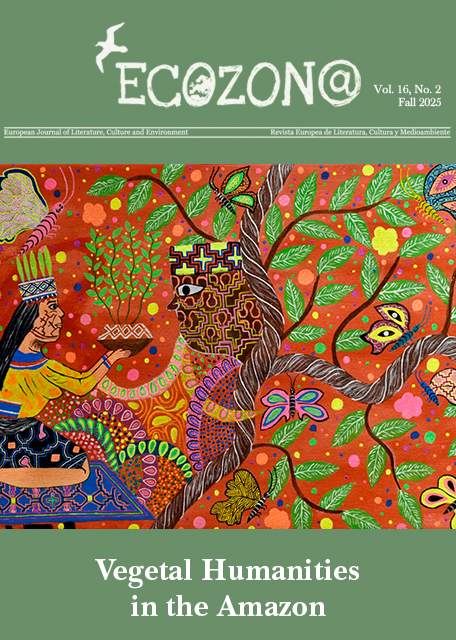Greening the Desire with Plants in Frances Hodgson Burnett’s "The Secret Garden"
DOI:
https://doi.org/10.37536/ECOZONA.2025.16.1.5429Keywords:
Frances Hodgson Burnett, The Secret Garden, plant-human interaction, vegetal therapeutization, Roszak’s notion of ecological unconsciousAbstract
Written in the Edwardian period, Burnett’s The Secret Garden (1911) portrays the regenerative dialogue of a ten-year-old girl, Mary Lennox, with plants in a secret garden. Born to a well-off family of British origins in colonial India, Mary is sent to live with her uncle-in-law, Archibald Craven, in England upon the loss of her parents due to the outbreak of cholera pandemic. As a child denied parental love, Mary suffers from feelings of detachment; however, her discovery of/by the secret in England leads to a series of psychophysical changes in her, transforming her egocentric and spoilt nature into a self of awakened empathy and desire. In the space she weaves out of plants in the secret garden, she substitutes for the lack of mother, revives her desire to persist, and helps her orphaned cousin, Colin, as well, to restore a sense of psychic-physical coherence: entering the solipsistic universe of Colin locked behind the doors, she introduces him to the secret garden and the flower seeds they enthusiastically plant there signal the simultaneous planting of health and joy in their hearts. Taking the secret garden which Mary and Colin dare confronting as a metaphor for the repressed nonhuman dimension of life, this essay argues that in a fashion countering the idea of horizontal progression embedded in traditional bildungsroman and thereby contesting the Cartesian idea of human self-containedness, the relation between the orphans and the flower plants they tend in the secret garden draws a literary portrait of therapeutic human-nonhuman plant interaction. Drawing on Roszak’s notion of ecological unconscious, the essay discusses the orphans’ psychic-bodily wounds as stemming from their separation from nature, which takes in the novel either the shape of rose trees, snowdrops, or daffodils on the path of awakening them to their nonhuman potential.
Downloads
Downloads
Published
Issue
Section
License
Authors who publish with this journal agree to the following terms:
a) Authors retain copyright and grant the journal right of first publication with the work simultaneously licensed under a Creative Commons Attribution License that allows others to share the work with an acknowledgement of the work's authorship and initial publication in this journal (CC BY-NC for articles and CC BY-NC-ND for creative work, unless author requests otherwise.
b) Authors are able to enter into separate, additional contractual arrangements for the non-exclusive distribution of the journal's published version of the work (e.g., post it to an institutional repository or publish it in a book), with an acknowledgement of its initial publication in this journal.
c) Authors are permitted and encouraged to post their work online (e.g., in institutional repositories or on their website) prior to and during the submission process, as it can lead to productive exchanges, as well as earlier and greater citation of published work (See The Effect of Open Access).










